Text
Into the unknown.
Have you ever looked up at the ceiling whilst in a doctor’s room? Have you noticed that they all almost have those same ugly ceilings? The ones with 5000 holes, where you can’t tell the start from the finish? Where’s the pattern? What’s the pattern? Is there a pattern? Well, 4 weeks ago, that ceiling represented my entry into this community block. Haphazard and so unclear.

Upon entering the Cato Crest Community, one could argue that I was somewhat (okay, very) naïve. I had hopes and dreams to see the Cato community revolutionised, I was going to tap into my ‘Fix-It-Felix’ skills and, well, fix it! However, what I did not expect was the twisted, bumpy road ahead where it takes at least 3 weeks of planning to get an appointment with a councillor and grovelling at the feet of gogo’s bi-weekly, to engage in chair Zumba. Gosh, did my magic hammer prove ineffective.
Looking back at who I was and the visions I once held 4 weeks ago, I realise that I have grown. But not the beautiful, flawless, ‘butterflies in your tummy’ type of grown. More like the crying daily, heart palpitations, existential crisis growth. My professional and personal journey in the community has been nothing less than daunting, riddled with many challenges. However, in these 4 weeks, I have learnt a little trick: tilt it sideways! In community, I feel I truly have mastered one of the keys to life – learning how to change perspective. (Polimeni, Vichansavakul, Iorgulescu, & Chandrasekara, 2013)
As a professional, this quality is significant in every way as it affords you the necessary ability of adaptation. In the Cato Manor Clinic, I am learning how to employ this skill effectively. Whilst I am no master at shapeshifting, I feel I may now have progressed as thera-putty; at first, I found myself rigid in theory, but as I continue throughout my sessions, I warm up to the idea that I know what I am doing, and I need to practically fit it to the case at hand. Throughout our projects, minimal went according to plan – in my third week of block, I thought it would have been the death of me. But here I stand, very much alive – finding alternate solutions, strategizing, and using my “Kerr-isma” to cross that finish line. (valethealth, 2020)
Part of employing adaptability, has lent a hand in teaching me that sometimes, you cannot do it alone. Working in community has taught me a vital lesson – everyone has a role to play, from the community members themselves to each member of my group. Being able to adjust and adapt according to the needs of those around you is imperative for effective results. Collaborating with the community members has allowed me a new sense of humility: entering this block, I was so quick to decide what needed to be fixed. However, as I continually engaged with them, I began to realise that I was not the expert here – they were. From a community members viewpoint, I was able to understand what they perceived therapy to be, what they deemed as social injustices which needed to be addressed and what they consider as culturally appropriate. Taking into consideration the concerns of the people themselves, has enabled a sense of ownership and belonging within our projects. As mentioned in one of my earlier pieces of writing, I run the ECD project. At the ECD, one of my strategies to facilitate buy-in, to ensure sustainability of this project, was to involve every member involved in running the ECD. This worked beautifully as the owner of the land had provided us with his own concerns and co-created solutions to effectively overcoming them. Ever since, when the group runs, the owner of the land comes to check that these solutions are being implemented. (“How Important Are Collaborations in a Community?,” n.d.) Kerr-isma (5) and anxiety (-2). Game on.
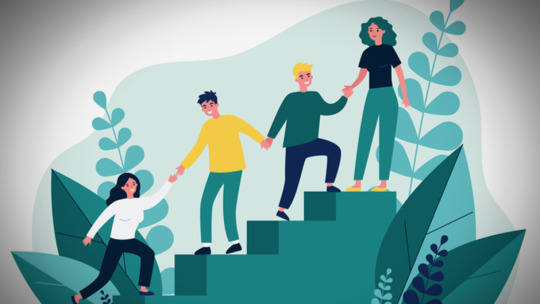
Figure 1(“Learnings on Successful Community Collaboration,” 2021)
If you and a friend were walking alongside a river, and noticed person after person, being washed away with the current, what would you do? My lecturer posed this question to the class of 2024 in our first community lecture. Being the loudmouth I am, I quickly raised up my hand, so filled with confidence that my answer was the right one – we would jump in and save them from drowning! Doesn’t that answer sound glorious? Well, let me tell you, it’s far from effective. (Christopher, C)
Having spent much time in the streets of Cato Manor, my community eyes have been unscaled – I have become aware of the rife social injustices faced within this community historically and till date, alongside their associated outcomes, which lend a hand to the socio-economic standing of this population. How do I fix this? I found myself asking this question many times in the past 4 weeks, but as I reflect, I begin to wonder – can I? Whilst I cannot reverse the work of social injustice, I surely can remediate, rehabilitate, and prevent the declination of this population. As an attempting “WOKE” student, I believe that the services provided at a community level surpass superficial byproducts of unjust generational systems. My works have evolved from wanting to fix every symptom I noted, to rooting my service in social justice, equity, and equality, warring the cause of it all. Simply put, my answer has changed. According to C. Christopher, 1 person should jump in to save the people, whilst the other walks upstream to find the one pushing them in and stop them. (Christopher, C) I finally get it.
Being able to formulate such a solution requires critical analysis, critical thinking and in turn, critical resistance. At the risk of sounding harsh, this notion encompasses a component of sensitivity and compassion toward those who have borne the social injustices imposed. It takes a revolutionary mind with a heart for progression of a lagged people.
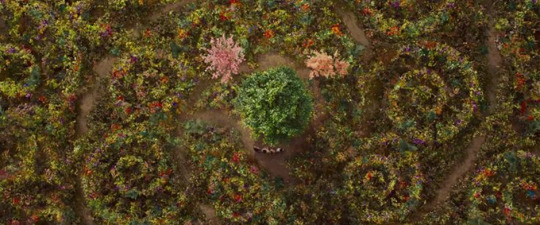
In conclusion, this block has changed me. It has made me not just a better healthcare professional, but it has taught me respect, diligence, and an unwavering commitment toward what matters. This block has taught me faith. That when something doesn’t work out, it is in fact OKAY! What is not okay, is giving up. As a soon exiting UKZN student, I think I finally understand what our lecturers have been trying to instil in us – integrity and compassion for our people. From a haphazard and unclear start, I believe that entering community service would be quite like my entry in community - a wild mess. However, I believe it now as beautiful and all in process, entering into the unknown.

References
How important are Collaborations in a Community? (n.d.). Retrieved from www.linkedin.com website: https://www.linkedin.com/pulse/how-important-collaborations-community-heygrowzilla/
Learnings on Successful Community Collaboration. (2021, June 9). Retrieved from Giving Compass website: https://givingcompass.org/article/learnings-on-successful-community-collaboration
Polimeni, J. M., Vichansavakul, K., Iorgulescu, R. I., & Chandrasekara, R. (2013). Why Perspective Matters In Health Outcomes Research Analyses. International Business & Economics Research Journal (IBER), 12(11), 1503. https://doi.org/10.19030/iber.v12i11.8186
valethealth. (2020, June 18). The Importance of Adaptability in Healthcare. Retrieved from Valet HealthTM website: https://valethealth.com/adaptability-in-healthcare/
0 notes
Text
Imagine all the people
Could you imagine a community where everyone’s tummies are full, and their hearts are in turn happy? A community where children thrive in their education – awake and alert, the first to raise their hand when they know the answer, but also the first to raise their hand to ask for help when they don’t. Could you envision an environment that fosters opportunity, success, and inclusivity amongst its youth and its old? A community who holds nothing back in celebrating the diversity of its people. A community whose norm is equal and equitable accessibility and support, regardless of age, gender, culture, or ability. Well, I can, and that is the vision which drives my work in the community of Cato Crest.
When you look at the sustainable goals of development, it looks almost like a map. I envision it as a map outlining the journey to a society above. By aligning my efforts with the SDG’s as outlined by the UN, my work serves as a compass steering toward true North for those in the community. Having to choose only 5 SDG’s that I intend to work toward in my community block seems almost disadvantaging, even if it is for the sake of the topic. The truth is that my work in the community as an occupational therapy student aims to provide holistic intervention, catering to all areas I note needing aid, moving beyond much more than 5 sustainable development goals. However, the 5 most significant SDG’s that I find relevant to using as a guide for my practice in this community would have to be SDG’s 2,3,4, 5 and 10. (“With the SDGs, Everything Is Connected | Greenbiz,” n.d.-b)
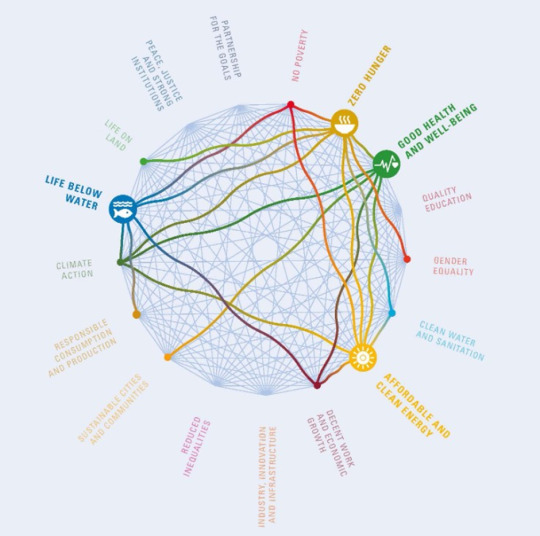
Figure 1(“With the SDGs, Everything Is Connected | Greenbiz,” n.d.-b)
SDG 2: Zero Hunger
In the Cato Crest community, I have worked alongside the municipal ladies who work daily in the local community kitchen. They spend their days preparing hot meals, using fresh produce (ask me, I pushed their vegetable cart up the ramp) and nutritious ingredients. This week I had the opportunity of engaging with those who needed this service, and this was a major eye-opener for me - there were so many people who had lined up, waiting for almost an hour before receiving what might be their only meal for the day. Having this experience stimulated my thinking about the state of food security in this community and who else might need this help. I therefore decided that in my interactions with the community members, be it at the clinic or even strangers I engage with as I walk through the streets, I would create awareness of the kitchen and encourage accessing these services for those in need. Having worked in the community in these past 3 weeks, has allowed me to understand that sometimes healthy meals are not easy meals, and with all the hustle and bustle of life, many community members tend to eat what may be the quickest and most filling, often lending a hand to unhealthy eating habits which impacts overall health and wellbeing.
SDG 3: Good health and wellbeing
By promoting good healthy eating habits, we can conclude that there is a domino effect in working toward the SDG of good health and wellbeing. But it doesn’t stop there! As students, we plan and run many programmes in the community aiming to achieve good health and wellbeing amongst the people. Examples of these programmes would be the Philamtwana project, the Active Aging/Wellness group, and the Mayville Secondary School project. In each of these programmes, the students work toward this SDG through screenings, creating awareness of proper health practices (physical and mental) and facilitating an understanding of the impact of health on wellbeing. (Parry, 2023)
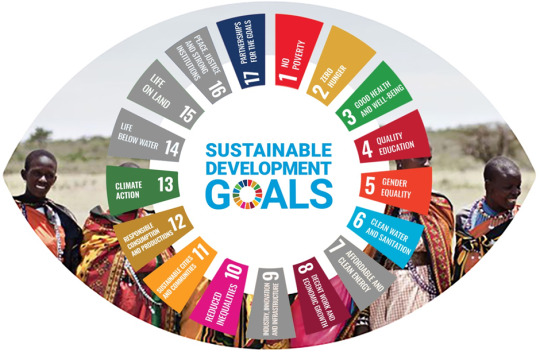
Figure 2(“Eye Health and the Sustainable Development Goals,” n.d.)
SDG 4: Quality Education
There are 2 projects that I run in the community which I hold extremely dear to my heart – the Mayville Primary School project and the ECD project. As a student who is passionate about not just the youth as our future, but also as an individual who adores paediatrics, I have noted the many gaps in which, I as an occupational therapist, may be able to fit into, to facilitate quality education. At these levels, I have screened for delayed developmental milestones amongst the toddlers at the educational daycare centre and screened for red-flags amongst the school-goers. As a result of identifying individuals who may need extra assistance, I have created a programme tailored to these children, meeting them at their current level, facilitating a furthering in their capabilities. I have also sought to create awareness amongst caregivers and teachers by educating them on the red flags to look out for amongst these populations, thereby enabling them with the skill to determine who may need further specialised intervention. I believe that my workings toward this goal is directly linked to quality education in which optimal functioning of strengths related to learning, are teased out and nurtured.
SDG 5: Gender Equality
In many communities and cultures, women are often oppressed, solely because they are women. This week, my supervisor had dropped a “WOKE” bomb into my lap – she had asked “who are the enablers of patriarchy? It is us – women.” (Hassim. A). At first, I was stunned, but dwelling on it – she’s right. And I believe that if women hold agency to be silent enablers, we should also hold agency to be loud disablers – breaking the chains of patriarchal values and customs imposed on us through generational traditions. As a woman, and student, I believe in facilitating gender equality by bridging the gaps created by the wayward thinking of patriarchs. A method which has been implemented with this aim in mind, would be the carry out of the following projects run at the community level: Maternal mental health, Mayville Secondary School, and Active Aging. In these programmes, we are exposed to emerging and ripe women (of various ages and backgrounds), which we use as a platform and opportunity to provide support, to educate and to upskill. Through these actions, we aim to break down the stereotypes imposed on women and promote equality amongst both genders. I strongly believe that oppression of a gender is not required for the progression of another, and though these acts may seem almost like small stones being tossed into a large river, these small acts eventually create a ripple effect, enabling a shift in the dimensions of its medium. (Christopher. C)

Figure 3(“X.com,” n.d.-b)
SDG 10: Reduced Inequalities
As littered throughout this blog, the culmination of my efforts ultimately works toward this sustainable development goal. As an aspiring revolutionary humanitarian, my works serve to bridge the gap between the flourishing and the oppressed. Every Sunday, I attend church. And almost every Sunday, my Pastor says, “If you want to be close to God, be close to His people.” (Daniels. A). Working in this community has taught me of the social injustices imposed on this population and having identified these, I have aimed to create and carry out interventions, as highlighted, inclusive of the marginalised and considerate of the disabled.
Upon entering the community, I was a student whose eyes were filled with extreme passion and had an expectation of revolutionary impact. Whilst dealing the heavy blow to my ego that not all revolutions can occur overnight, I remain committed to throwing stones, even when the waters seem stagnant. I remain committed to following the map toward a better community. Can you envision it? Because I can.
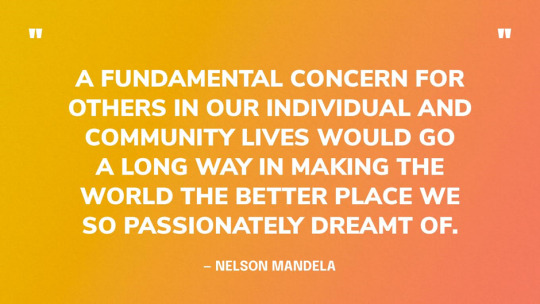
Figure 4(“17 Best Humanitarian Quotes from Famous World-Changers,” 2022)
References
Eye health and the Sustainable Development Goals. (n.d.). Retrieved from The International Agency for the Prevention of Blindness website: https://www.iapb.org/learn/knowledge-hub/elevate/sustainable-development-goals/eye-health-and-sdgs/
National Geographic. (2023). Sustainable Development Goals | National Geographic Society. Retrieved from education.nationalgeographic.org website: https://education.nationalgeographic.org/resource/sustainable-development-goals/
Parry, G. (2023, August 6). The United Nations’ Sustainable Development Goals (SDGs). Retrieved from Global Services In Education website: https://www.gsineducation.com/blog/the-united-nations-sustainable-development-goals-sdgs
With the SDGs, everything is connected | Greenbiz. (n.d.-a). Retrieved from www.greenbiz.com website: https://www.greenbiz.com/article/sdgs-everything-connected
x.com. (n.d.-a). Retrieved May 24, 2024, from X (formerly Twitter) website: https://x.com/PaulPolman/status/902158345510977542
17 Best Humanitarian Quotes From Famous World-Changers. (2022, June 2). Retrieved from Good Good Good website: https://www.goodgoodgood.co/articles/humanitarian-quotes
0 notes
Text
Ready or not, here I come.
Being immersed in the waters of Cato Crest during the past 2 weeks has been an eye-opening experience. I have never felt so knowledgeable yet so deficient at the same time. Being placed in the heart of the community has urged me to facilitate the link between my ‘theory bank’ and my skill in practical application. Moving from 3 weeks with a client to 30 minutes. Yikes. Rough. But why? Why is it rough? Has my academic training for the past 3 years (going on 4) not been for this moment – to serve the community effectively?
The glorious tapestry of occupational therapy is the resultant creation of the intricate intertwined culmination of various theorists and founders. Often, we reference these brilliant foundation makers in supporting the basis of our knowledge. Whilst diverse in world views and ethos, majority of these founders and theorists provide knowledgeable content which stem from a western world viewpoint. (“History of the Occupational Therapy Profession - Prince Edward Island Occupational Therapy,” n.d.) This foundational base thereby informs our practice as learners, which may prove effective and efficient in minority world nations. But what happens to those who do not meet the criteria of “minority world”? What foundational guide is then to be followed for the outliers of western context, whose social, economic, political, and cultural injustices pose vastly different from those experienced by those from the minority standing? One can therefore question the effectiveness of our foundational knowledge in serving our local South African communities. However, the UKZN OT curriculum has attempted to assist students in bridging the gap between western practice and contextually relevant practice by incorporating elements of cultural practices & cultural awareness and sensitivity into its syllabus during the past 3 years, to facilitate appropriate community practice. Many of our own lecturers have further published pieces relating to community practice, aiming to promote and provide relevant knowledge, to serve our local communities. A particular lecturer I have in mind (who I truly had not understood until stepping into my community block), used her experiences as a teaching tool. Rather than focusing mainly on theoretical knowledge, she often drew on her life’s experiences to teach students valuable and relevant lessons relating to community practices.

Figure 1(“Pin by Bryce Artis on Disney | Boy Meets World Quotes, Boy Meets World, World Quotes,” n.d.)
However, I have found myself questioning as to why in the past 2 weeks I have felt lost and second guessing my every move. Am I supposed to splint him? Am I supposed to treat her depression? Where do I start? Why have I been classifying my patients according to whether it's a physical case vs a psychosocial case? Why can I not get my community lens into focus? The other day, my supervisor had said something that resonated within me – “every and any person can be seen as a community case”. In the past 3 years, the structure of our core modules has been distinctly classified into 2 blocks – Psychosocial and Physical. Yes, there are many other modules which are done in conjunction with these, however, I ponder on why these distinct themes are highlighted in our second and third year, whilst our final year encompasses a paediatrics block and a community block. Should these blocks not have been implemented earlier if they were important enough to be included in our final year? In our physical and psychosocial block (second and third year), elements of community and paediatrics are surely covered, but in my opinion, not critically nor extensively explored. The onus is on students to read up further under “additional resources” and best believe, if you snooze, you lose. Here, you may question, what happens to the students who do not have the volition toward extending their bridge? Does the community in turn have to suffer the dire consequences of the expectations of independent learning amongst 20-something year olds? It is important to take into consideration the differing levels of creative ability amongst students, which are directly linked to their preferred and most effective learning styles. The structure of our degree should meet the group at their different levels, catering to those who are unable to facilitate the link and aiming to ease the integration of knowledge – aiming to provide well-equipped healthcare professionals whose skill is of competent service delivery to the community. (The Model of Creative Ability, 2005)
I believe that having the degree compartmentalised has been a poor prognostic factor for the currently trained OT students, in which our brains have been accustomed to classifying our patients rather than viewing them holistically. (Gagatsis, 2012) In our community block, everything is supposed to ‘tie together’. Should these elements have been untied in the first place? Having been exposed to an array of supervisors and previously trained students from UKZN, the change of curriculum has been discussed and an evident shift in the quality and nature of students produced has been reported. I, therefore set out to explore what differences have been implemented – we had horticultural classes?!
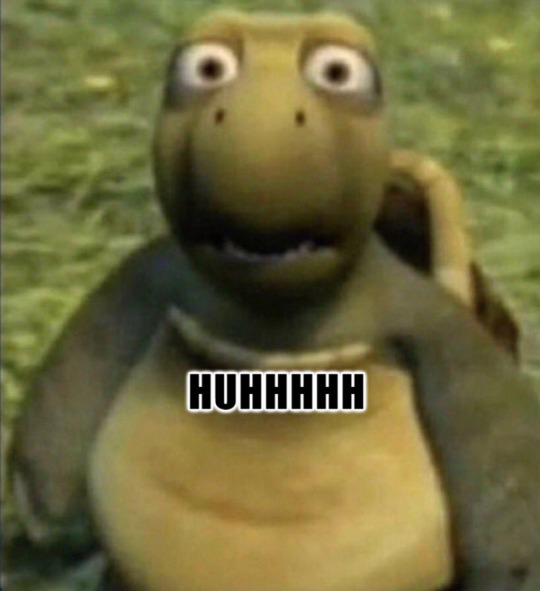
Figure 2(“Shocked Turtle Meme Generator,” n.d.)
A change to last year’s Psychosocial curriculum which I believe has proved very beneficial, was having spent 1 day in our ‘psychosocial’ block time, to visit a community site. Having done this, I was able to somewhat gauge an expectation of what it would be like to work in the community. I do believe that being able to work in a community setting from the get-go of the degree may prove most effective in training OT’s to be competent when discharged into the community, through adequate exposure in the field. Having completed most of my blocks in tertiary hospitals has allowed me to become accustomed to the nature of a hospital setting in which I am now comfortable and can cope with its associated demands.
Whilst in the community, I have noticed a massive change in the demands and requirements from myself as a therapist. For one, I have approximately 30 minutes with a patient, and this may be our first and last session! This is an extremely major shift from being able to see my patients almost twice a day, daily, for 3 weeks. I must make those 30 minutes count. In that half an hour, I need to integrate my knowledge and ensure that I am serving this individual holistically. It’s not a physical case or a psychosocial case – it’s an everything case, a community case! I believe that although our curriculum has not made the integration crystal clear, it has lent us the opportunity to self-discover the beauty in the holism of an occupational being. Although, I would have much rather preferred this discovery a tad bit earlier, I appreciate the urge toward independent learning in our final year, facilitating agency in our professional stride. As soon exiting university students, this skill is vital for us to acquire to promote an appreciation for lifelong learning which is a core characteristic of a healthcare profession. (Glodz, 2023)
Whilst the UKZN curriculum does not fatten its calves with paramount integrated ‘community’ knowledge (theoretical together with practical); it enables independent learning in the deep-end at the heart of community – in which the onus is upon the student to facilitate their link of knowledge toward skill. The UKZN curriculum displays a value for students who put in the extra effort to go the distance, whose objective is to produce the crème de la crème of occupational therapists.
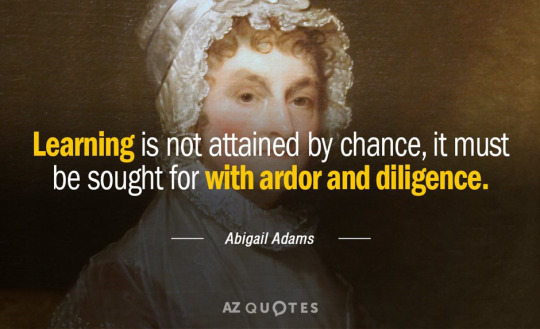
Figure 3(“TOP 25 LIFELONG LEARNING QUOTES,” n.d.)
References
Gagatsis, A. (2012). Compartmentalization in Learning. Encyclopedia of the Sciences of Learning, 665–668. https://doi.org/10.1007/978-1-4419-1428-6_133
Glodz, M. (2023, September 11). Power of Lifelong Learning: Strengthening Your Healthcare Career. Retrieved from CV Pilots website: https://www.cvpilots.co.uk/blogs/career-advice/lifelong-learning-importance-for-healthcare-career
History of the Occupational Therapy Profession - Prince Edward Island Occupational Therapy. (n.d.). Retrieved from www.peiot.org website: https://www.peiot.org/society/society-history-of-ot#:~:text=Occupational%20Therapy%20(OT)%20stemmed%20from
Jansen van Vuuren, J., Okyere, C., & Aldersey, H. (2021). The role of Occupational Therapy in Africa: A scoping review. South African Journal of Occupational Therapy, 50(3). https://doi.org/10.17159/2310-3833/2020/vol50no3a2
Pin by Bryce Artis on disney | Boy meets world quotes, Boy meets world, World quotes. (n.d.). Retrieved May 17, 2024, from Pinterest website: https://za.pinterest.com/pin/1688918585329640/
shocked turtle Meme Generator. (n.d.). Retrieved May 17, 2024, from imageresizer.com website: https://imageresizer.com/meme-generator/edit/shocked-turtle
The Model of Creative Ability. (2005). Retrieved from https://vula.uct.ac.za/access/content/group/9c29ba04-b1ee-49b9-8c85-9a468b556ce2/Framework_2/pdf/The%20Model%20of%20Creative%20Ability.pdf
TOP 25 LIFELONG LEARNING QUOTES. (n.d.). Retrieved from A-Z Quotes website: https://www.azquotes.com/quotes/topics/lifelong-learning.html
0 notes
Text
Let’s talk about superheroes. Sorry, moms. I meant let’s talk about moms.
Timid. Scared. Overwhelmed. A crying baby on hip, baby’s bag on shoulder, a brown envelope in one hand and a rattle in the other. There she stood before me, the tiniest lady lost in a crowd of busy people rushing toward the files department and scurrying toward vitals. “Can I help you, sisi?”, I kindly offered. “Please.”
Motherhood. Have you ever wondered about the miracle of life? From the unification of 2 single cells, to the bundle of purity whose giggles make life seem a little less daunting. The essence of fertility is embodied by a mother. Just as the soil of the earth cradles seeds within, providing them with fertile ground to blossom, so does a mother who nourishes the foetus within her. A mother houses not just her own baby, but also societies future. (Answers, 2022)
A mother is a woman who is acknowledged as the birthing parent of a child. She is responsible for the safety, nourishment, care, and development of her children. She holds the amazing capability to not only birth forth flesh and bone, but also dreams, ambitions and the tomorrow of our community. Future doctors, politicians, dignitaries, farmers, stakeholders and even healthcare professionals, currently abide in the heart of our society – women. Which is why I believe that maternal and child health is the most significant health intervention whose delivery needs to be improved in our community.
According to research, “maternal health plays a vital role in ensuring the health and well-being of both the mother and the child” (Leung, 2023). Ensuring the good health of a mother not only acts as a preventative measure in the developmental process of the foetus, but also serves as a risk-reducing factor regarding birth complications. It is important to note that maternal health does not only focus on the health of the mother during pregnancy, but also during childbirth and during the post-partum period.

Through utilizing a political lens, as an occupational therapy student, I believe that good maternal health has a domino effect on the health and well-being of children. If a mother is in good health, she will be a source of social and economic nourishment and replenishment for her children. She would be able to interact and engage with her child maximally, promoting appropriate developmental milestones through stimulation and would also be fit in health, to enter the work field if she chooses, to provide for her children. Therefore, I believe that the improvement and provision of maternal health services is key to overcoming poor child health.
At Cato Manor Clinic, I was able to provide maternal health intervention to a very young mother. Initially she was extremely hesitant to speak, however whilst learning about her case, I had discovered that this young mother felt isolated in her motherhood. She had felt isolated due to having fallen victim to societies negative perceptions on young girls falling pregnant before marriage. According to research, cultural and societal stigmas may act as a socio-cultural barrier which hinders new mothers from seeking support (Allen, 2024), as evidenced by my exchange with this young and new mother.
Cultural and societal pressures may further adversely affect the maternal mental health of a woman and may even attribute toward post-partum depression. Upon screening, she had described her symptoms as symptoms of poor mental health – feeling hopeless, feeling low, loss of interest and stressed. (Care Health Insurance, n.d.)
Post-partum depression may not only affect the mental and physical well-being of the mother, but as discussed earlier – may also affect the health of her child negatively, as highlighted by Adele Viguera. Post-partum depression may lead to a decline in the mother’s functional activity, ability to connect and bond with her baby through play and even breastfeeding (www.uptodate.com, n.d.).
Hypothetically speaking, this may affect the mother’s relationship with the child in which the child may be treated poorly or even neglected by the mother, thereby causing a deficient input from the mother needed to achieve maximal well-being.
As Occupational Therapists we have a role in prevention, rehabilitation, and remediation of maternal and child health care. In the Cato Community, students run projects which aim to provide services related to child and maternal health. During outreach, the occupational therapy students screen children for developmental delays, alongside health promotion for maternal wellness for the mothers. By implementing such services, the students aim to promote maternal and child health.

As an occupational therapy student, I believe that there is a large opportunity to provide health care services to this population in which we can provide assessment and treatment by providing education, facilitating community engagement, and advocating for accessible health services at a community level. So the next time a mother whispers, "Please", I hope you hear it too.
Reference list
Allen, D.S. (2024). Overcoming The Stigma of Maternal Mental Health: Why It Matters. [online] Postpartum Depression Illinois. Available at: https://ppdil.org/2024/01/overcoming-the-stigma-of-maternal-mental-health/#:~:text=Navigating%20the%20sensitive%20topic%20of [Accessed 10 May 2024].
American Public Health Association (2023). Maternal and Child Health. [online] www.apha.org. Available at: https://www.apha.org/topics-and-issues/maternal-and-child-health.
Answers, F. (2022). The Miracle of Conception. [online] Fertility Answers. Available at: https://www.fertilityanswers.com/the-miracle-of-conception/.
Care Health Insurance. (n.d.). Importance of Maternal Mental Health. [online] Available at: https://www.careinsurance.com/blog/health-insurance-articles/why-is-maternal-mental-health-important.
Healthpovertyaction.org. (2018). Maternal & child health | Health Poverty Action. [online] Available at: https://www.healthpovertyaction.org/how-poverty-is-created/women-girls/maternal-child-health/.
Kznhealth.gov.za. (2023). Maternal Child and Women’s Health. [online] Available at: https://www.kznhealth.gov.za/mathealth.htm.
Leung, H. (2023). Importance of Maternal Health: Ensuring Safe and Healthy Pregnancies for All Women. Journal of Fertilization: In Vitro - IVF-Worldwide, Reproductive Medicine, Genetics & Stem Cell Biol, [online] 11(2), pp.1–2. doi:https://doi.org/10.35248/2375-4508.23.11.298.
mch.umn.edu. (2018). What is Maternal and Child Health? | Leadership Education in Maternal & Child Public Health. [online] Available at: https://mch.umn.edu/what-is-mch/.
Students, H. and Addisse, M. (2003). LECTURE NOTES Maternal and Child Health Care. [online] Available at: https://www.cartercenter.org/resources/pdfs/health/ephti/library/lecture_notes/health_science_students/LN_maternal_care_final.pdf.
World Health Organization (2019). Maternal health. [online] Who.int. Available at: https://www.who.int/health-topics/maternal-health#tab=tab_1.
www.uptodate.com. (n.d.). UpToDate. [online] Available at: https://www.uptodate.com/contents/postpartum-depression-adverse-consequences-in-mothers-and-their-children#:~:text=Maternal%20postpartum%20depression%20impairs%20functioning.
0 notes
Text
Watch a movie that has mental health as a theme or has a person with a mental health challenge or that presents district occupational barriers for those in the movie. Reflect on your learnings from this movie and that have influenced you as an OT student.
“If people want to breed winners, use horses, not children.” - Ram Nikumbh.
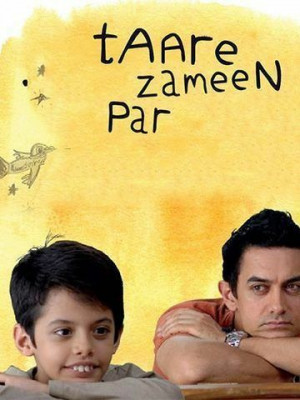
Stars on Earth - have you ever taken a minute to look up ? Have you ever noticed the dazzling twinkle of the stars above us ? From here, they look almost delicate, what agency could these little lustrous dots hold ? “They are the building blocks of galaxies”(Zuckerman, 2019). In the infinite tapestry of our universe, stars shine. Each clothed in glorious splendor, each dressed in its own unique magnificence. Together, they collude, putting on the most exquisite show for all to see - our beautiful night skies. Each star holds a distinctiveness about it - nobody has ever dared to compare the beauty of these stars amongst each other. Why ? “The danger of comparing ourselves to others is that our comparisons are never fair.”(The Dangers of Comparison, n.d.)

The movie, Taare Zameen Par, delves deep into the story of a young misunderstood boy who comes from a middle class family in India, confined by the expectation of perfection. Ishaan, seems a little off. He isn’t like the other kids. He sees dancing letters and flying numbers ! He wanders off into other worlds, fixated on his missions. Reading is hard. Talking is hard. Being with the other children is hard. Explaining to your family that you just can’t .. is hard. As a result of his poor academic performance, Ishaan is sent away to boarding school. His father deems him a disgrace, a stubborn boy who just won’t do anything besides play and paint.

It is one thing to have your own mind and capabilities betray you. But to have the only people you have ever known, leave when you need them the most ? Alone, afraid, incapable. The young boy is forced to fend for himself. Try as he might, Ishaan battled with this adjustment - slowly the overwhelming feelings of being abandoned and frustrated, began to fade. He barely ate and never spoke. His imagination too, had left him. ‘Idiot, duffer, loser - you will amount to nothing.’ He was simply existing, no longer living.
All this changes, when an unconventional temporary art teacher finds himself before Ishaan. Burdened by the appearance of this depressed little boy, Mr. Nikumbh sets out to change the course of this fragile soul. Mr. Nikumbh is able to identify that Ishaan is dyslexic - he’s not disobedient, he’s not dumb - he just doesn’t know how. Mr. Nikumbh begins to draw on Ishaan’s interests and strengths, facilitating the discovery of his hidden potential - painting. Each day, the student and teacher work on improving his reading and writing, through the most unconventional methods. Giggles began to return - this little boy just needed someone who was willing to accept him as he is, and help him become the best version of himself. Mr. Nikumbh had changed Ishaan’s life by appreciating his definitive variation that makes him exquisite.
As adults, we often battle to communicate our feelings or positions effectively. I see it everyday, between students, friends, lovers, parents, children, lecturers and even healthcare professionals. As highly functional beings we still find the difficulty in this necessary skill. Could you imagine this little boy, who cannot even express his happiness appropriately without chastisement, experiencing numbness acquainted with depression ? Could you imagine explaining to your parents and teachers that the letters and numbers dance before your eyes when you gaze upon them ? Could you imagine the difficulty in having to admit that you just cannot ?
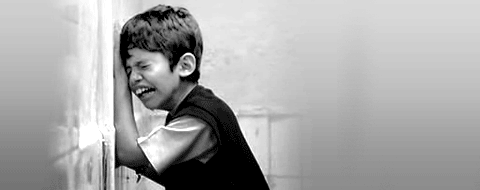
Watching this movie as an occupational therapy student, I was moved. So often, we try to fix what is broken, to put it all back into its box. Maybe it doesn’t belong in a box. This movie has helped me identify that the most crucial attribute needed is to be human. No amount of fancy words, expensive textbooks and numerous courses could teach you that. Being able and willing to invest yourself in the life of another - what an honor and privilege. “Helping one person might not change the whole world, but it could change the world for one person.”
No two snowflakes are the same. (Is It True That No Two Snow Crystals Are Alike?, n.d.) Likewise, no two people are the same. Therefore, when approaching our patients’ - it is this attitude and approach that we are to adorn ourselves with. By comparing cases and people, we run the risk of bulldozing over the uniqueness of individuals and in turn, the journeys that have brought them forward. As a student, I am guilty of always attempting to do the thing that seems most professional, most correct and most sound. I have always battled to integrate compassion within my works optimally - I always feel that there is room for more, but how ? From this movie, I have learnt that there is no ‘right way’ - I have learnt of the identity that I wish to carry as a healthcare professional. I want to shift the dimensions of another’s life - restoring the child they once were. I want to advocate for the stars that are found on Earth.

References
Is it true that no two snow crystals are alike? (n.d.). Library of Congress, Washington, D.C. 20540 USA. https://www.loc.gov/everyday-mysteries/meteorology-climatology/item/is-it-true-that-no-two-snow-crystals-are-alike/#:~:text=Snow%20crystals%20are%20sensitive%20to
The Dangers of Comparison. (n.d.). Albert Ellis Institute. https://albertellis.org/2014/07/the-dangers-of-comparison/
What is the message left by the film Taare Zameen Par? (n.d.). Quora. Retrieved September 29, 2023, from https://www.quora.com/What-is-the-message-left-by-the-film-Taare-Zameen-ParZuckerman, C. (2019, March 20). Everything you wanted to know about stars. National Geographic. https://www.nationalgeographic.com/science/article/stars
1 note
·
View note
Text
Discuss “therapeutic use of self” giving examples from your practice.
Being a friend.

Scrubs - overflowing with pens, random pieces of paper, a deck of trusty cards and endless objects that could count as ‘therapeutic tools’. I rush along with my assessment file, bursting at the seams. Did I set up the activity according to my structuring principles in the write-up ? What was that example of a CBT technique on slide 23 of the AFR PowerPoint ? How did the textbook say to answer this question ? Being a student occupational therapist, I find myself constantly trying to draw on the knowledge I have been exposed to throughout my course. From new-age PowerPoints to dusty-old textbooks - I attempt to utilize every means of intervention theoretically approved. However, I have come to learn in the light of recent events (being my current block), that the most valuable therapeutic device is ✨personality✨! Whilst all the above surely is significant in this healthcare profession, the beauty of OT lies in its characteristic of a personal relationship with our clients (collaboration (MOTR/L, 2023)).

Whether in a physical or mental healthcare setting, I am bombarded by the vulnerability of my client’s. Be it a disorder, injury or disease - i have been exposed to people who find themselves in an almost defenceless state. Upon this realization, I begin to think as to what it would be like to be in their place ? How would I want to be taken care of ? How would I want my therapist’s to treat me ? (empathy (MOTR/L), 2023) This was the initiation of my critical thinking and the application of using myself as a therapeutic tool.
From the term ‘therapeutic use of self’, I have gathered the importance of capitalizing on my own “personality, perceptions, opinions, and judgments” in a manner which enables my therapy to be more effective. (MOTR/L, 2023). Being able to harness and utilise my innate characteristics, in a professional manner was a bit challenging at first. Would the recovering stroke-survivor find the wit in my humour ? What would my supervisor say ? Is it even allowed to spend half my session laughing and the other half talking about something completely unplanned for ? NO WAY. Put on that lab coat, let’s get to work - memorize that session write-up and stick to it ! If you had caught me at the onset of 2023, that most definitely would have been my answer, without any hesitation.
However, as my year draws to a close, I begin to reflect on the ever changing nature of my therapeutic approach. Every client that I have treated this year, each needed something different - however, something they seemed to have all needed, was a friend more than anything. This was the beginning of my therapeutic evolution. I started viewing my client’s in a more humanistic manner rather than just patients from a centre who needed fixing. If it mattered to them, it mattered to me (advocacy (MOTR/L, 2023)). Being a ‘multipurpose’ individual, I was able to adapt my many qualities to suit the nature of each client and session, tailoring it to the context of each individual. Somehow, through offering my 1000 jokes, a shoulder to cry on and preaching about my love of coffee, I was able to formulate a sincere relationship with my clients. This further encouraged engagement in each session and allowed for goals to be met, in an enjoyable and keen manner. I was able to almost instantly note the change in my clients and each session, as I began to expose who I really am - meeting them at their level of vulnerability.
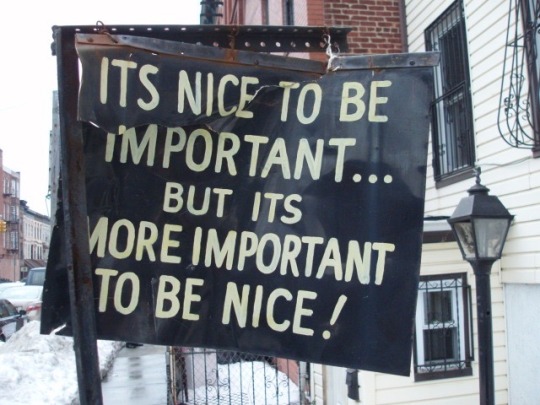
'They may forget what you said - but they will never forget how you made them feel' - Carl Beuhner
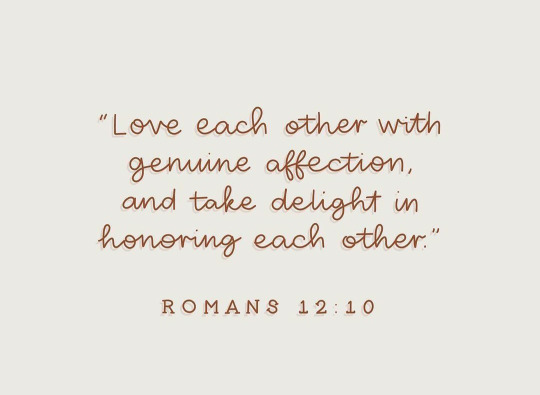
Upon research, I found that there are 4 techniques to maximize the effectiveness of using oneself as a therapeutic tool - attunement, unconditional positive regard (encouragement & cheerleading (MOTR/L, 2023)), self-disclosure and balancing the power differential (cheerleading (MOTR/L, 2023)). (Abson, 2019). These techniques have proved successful in that, through application of relating to the client (disclosing information about myself - mutual love for food) and providing them with unconditional positive regard (acknowledging that they are trying their best irrespective of the quality of the end product), I found my therapy to be more motivating and meaningful.
In conclusion, being able to utilize myself therapeutically requires a lot more than just being a book of knowledge. Sometimes half the therapy comes from simply being who I am - hanging up that lab coat and just being a friend.
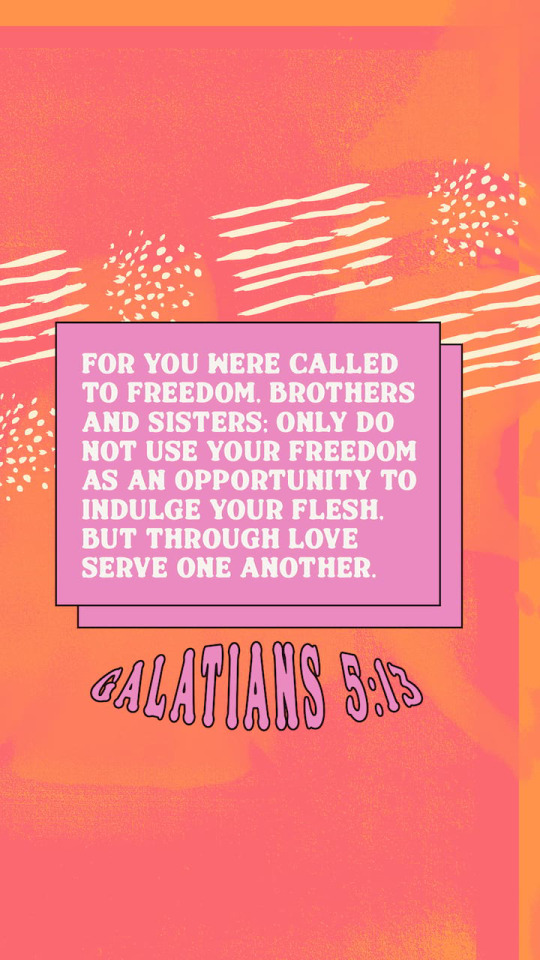
References
3 Ways Therapeutic Use of Self Can Improve Patient Outcomes. (2023, May 2). MedBridge Blog. https://www.medbridge.com/blog/2023/05/3-ways-therapeutic-use-of-self-can-improve-patient-outcomes/
Abson, D. (2019, March 3). Therapeutic Use of Self. The OT Hub. https://www.theothub.com/article/therapeutic-use-of-self
Chandler, M. (2018, April 18). Therapeutic Use of Self: What Does That Even Mean for OTs? | myotspot.com. Myotspot.com. https://www.myotspot.com/therapeutic-use-of-self/
Harkla. (n.d.). #106 - Improving your Therapeutic Use of Self and Why it’s Such an Important Part of Therapy. Harkla. Retrieved September 15, 2023, from https://harkla.co/blogs/podcast/106-improving-your-therapeutic-use-of-selfMOTR/L, M. C. (2023, April 27). How To Use Therapeutic Use Of Self In Occupational Therapy | OT Flourish. Otflourish.com. https://otflourish.com/therapeutic-use-of-self-occupational-therapy/
0 notes
Text
Mental Health is known as the Cinderella of Healthcare.
Bippity Boppity Boo!
Cinderella is a timeless tale, enchanting many with its marvel. But, somewhere in between the pumpkin carriage and glass slippers, lies more than just a feel good fairytale. We are going on an adventure to explore how this narrative compares to the idea of how mental health resonates in a healthcare setting.
“Mental health is a state of mental well-being that enables people to cope with the stresses of life, realize their abilities, learn well and work well, and contribute to their community. It is an integral component of health and well-being that underpins our individual and collective abilities to make decisions, build relationships and shape the world we live in.” (World Health Organization, 2022). Mental health can therefore be seen as the driving force which keeps us moving, it is the foundation of our existence. After unpacking the significance of this component of health, let’s focus on where mental health fits in within the healthcare system. Many individuals experience mental health issues, but due to a lack of promotion, not very many are aware that they may even be battling with poor mental health. The few who are, are often found unable to come forth seeking treatment, and this is due to 2 main reasons – the stigma attached to mental health and due to the common misconception, that “mental health is perceived as a luxury good.” (Banis, n.d.). According to a recent South African based article, it is made evident that mental illnesses have been neglected by the healthcare system in which “only 27% of those living with severe mental disorders receive treatment” (Nguse & Wassenaar, 2021).

Cinderella is evidently unappreciated and neglected (mental health care has been noted to have been understaffed, and underfunded in comparison to physical healthcare), she was locked away by people who were unable to see her worth as a stepchild (mental health care users are often also stigmatised and isolated), perhaps even being threatened by her (many people fear what they cannot understand, a physical issue is easy to see and accept, whereas a mental health issue is abstract hence evoking a sense of being threatened). Likewise, as many are unaware of the significance of mental health, it is often undervalued by the healthcare system. Mental health is also known to be a taboo topic in many cultures and societies; hence being afraid to confront this concept, it is easily overlooked as a primary component which may need to be addressed. Rather, time is spent dealing with issues that are easy to identify and accept first (physical health), before considering mental health as a prospect. Just as Cinderella was to attend to the hardest work (cleaning, waiting on her stepmother and stepsisters) keeping everything in order and not being cared for in return in the manner in which she deserved, mental health (as explored above) is the foundation upon which we are built (Arno, 2015), and is often neglected in the healthcare setting, resulting in further decline of mental function which impacts the occupational performance of individuals.

The stepmother (which can be seen as healthcare and society) viewed Cinderella as a burden & shameful (society and various cultures view mental health in the same manner), hence spent all her efforts in attempt to ‘fix’ her daughters (which can be seen as other aspects of health which are always addressed first due to poor acknowledgment of the importance of mental health – e.g., Physical health) and make them most appealing, to attain a marriage with the prince (end goal which in context, may be the most optimal health condition). The stepmother did not realise that she was trying to make them something they were not. Likewise, in healthcare, professionals tend to service other components of health expecting a desired outcome, without addressing the component (mental health i.e., Cinderella) which requires primary care, to attain optimal functioning in an individual.

With the aid of her fairy godmother (a support, in context should be professionals knowledgeable about mental health care), Cinderella was able to win the heart of the prince. Likely, in a healthcare setting, it takes the work of professionals, such as occupational therapists, to further encourage the promotion of necessary services, for mental health care service users to attain the most optimal condition of health. It takes someone willing to give mental health care the importance it deserves so that mental health is presented to society/healthcare in all its glory; only then will people treat mental health care with its due respect.

As a result, it is therefore integral that as an emerging occupational therapist I become knowledgeable and aware of mental health care and play my role in the healthcare setting, advocating for mental health and its significance. Let us press onward, training the emerging generation of healthcare professionals with the skills needed to provide mental health with the ‘bippity boppity boo’ it needs.

References
Arno. (2015, July 5). Mental training is more important than physical training. The Warriors Way. https://warriorsway.com/mental-training-is-more-important-than-physical-training/#:~:text=Mental%20and%20physical%20training%20are
Banis, D. (n.d.). Mental Illness Is The Most Neglected Health Problem In The Developing World. Forbes. Retrieved September 1, 2023, from https://www.forbes.com/sites/davidebanis/2019/01/24/mental-illness-is-the-most-neglected-health-problem-in-the-developing-world/?sh=72c2350f1db4
Nguse, S., & Wassenaar, D. (2021). Mental health and COVID-19 in South Africa. South African Journal of Psychology, 51(2), 008124632110015. https://doi.org/10.1177/00812463211001543
World Health Organization. (2022, June 17). Mental Health. World Health Organization; World Health Organization. https://www.who.int/news-room/fact-sheets/detail/mental-health-strengthening-our-response
0 notes
Text
Standing on the edge of becoming an OT.
With hands shaking, a voice trembling and legs quaking – I stand at the edge. It was 19:32, on a mundane Monday evening, when I received the call. “Welcome to OT!” When has the intro to Taylor Swifts latest heartbreak single ever let me down? The greatest power one could hold, is the capacity to shift the dimensions of another’s life. Growing up, I had always dreamt of facilitating such power - to equip people with the ability to feel fulfilled within themselves, to truly make a difference. The granny’s said doctor, the grandfathers said engineer, the parents said accountant, but the humanitarian in me said occupational therapist.
Being an OT student is extremely daunting, but not as daunting as having to explain in layman’s terms what OT truly is. I cannot count the numerous day-old jokes about helping my family members find employment. Between having to formulate an understandable definition of OT to those around me, and handling a goniometer, I often found myself asking “do I even know what I’m doing here?”. “Am I qualified enough to do this?”

“Reflection is a process which helps you gain insight into your professional practise by thinking analytically about any element of it.” (Health and Care Professions Council, 2021). As a third-year student, it is integral that I begin to reflect not just on the progress that I have made so far, but also on what aspects of my skillset require further refining, to ensure that I will be a competent professional.
“When a flower doesn't bloom you fix the environment in which it grows, not the flower”. (“When a Flower Doesn’t Bloom, You Fix the Environment in Which It Grows, Not the Flower.,” 2021). I am no stranger to feeling stuck. Mental health has been a factor in affecting my performance – my state of mind has had a direct impact on my ability to execute tasks and fulfil responsibilities. As a student, a weakness that I consider needs to be worked on, is my ability to handle stress and anxiety. Reflecting on the way I tend to handle my stress; I acknowledge how it becomes crippling and impacts my quality of learning. And so, to ensure that I bloom, I remind myself to handle my weaknesses with grace, as “any personal development journey is a lifelong commitment, not a sprint or achievable task. It will weather bumps and roadblocks, but it can also thrive in other areas of your life”. (Miles, 2022).
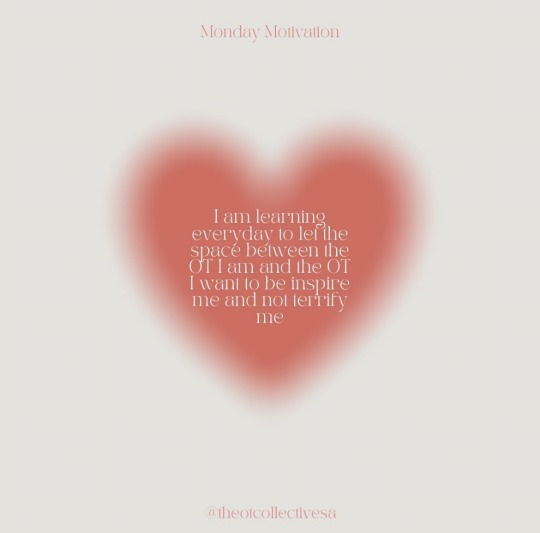
A strength that I have learnt to capitalize on, is utilizing my personality in a therapeutic manner. As an extroverted and friendly individual, I find it almost natural to form good rapport with my clients. Through creating this relationship, client’s respond well to intervention and proposed sessions which ultimately results in better occupational performance.
Through reflecting and critically analysing my position toward becoming an OT, I begin to harness my strengths and improve my weaknesses, allowing me to be the best professional that I could possibly be. With hands shaking, a voice trembling and legs quaking – I stand at the edge, at the edge of becoming an OT.
References
“When a flower doesn’t bloom, you fix the environment in which it grows, not the flower.” (2021, May 7). https://julieparkerpracticesuccess.com/when-a-flower-doesnt-bloom-you-fix-the-environment-in-which-it-grows-not-the-flower/#:~:text=%3E-
Health and Care Professions Council. (2021). What is Reflection? Www.hcpc-Uk.org; HCPC. https://www.hcpc-uk.org/standards/meeting-our-standards/reflective-practice/what-is-reflection/
Miles, M. (2022, February 10). What Is Personal Development and Why Is It Important? Www.betterup.com. https://www.betterup.com/blog/personal-development
OTR/L, R. L. (2023, April 15). What Exactly Is Occupational Therapy? Myotspot.com. https://www.myotspot.com/what-is-occupational-therapy/
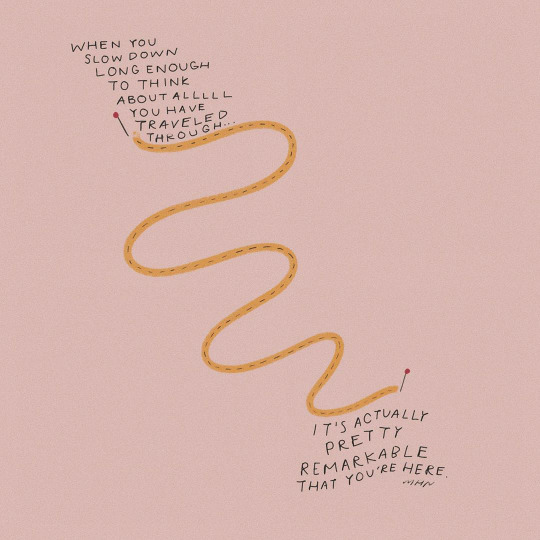
0 notes
Text
Blog 5
Cultural Humility.
Hello. Lotjani. Sawubona. Dumela. Hallo. Molo. Axuveni. (Buick, n.d.)
Braai’s, ancestors, milk tarts, flipflops in 15-degree weather, sangomas, bunny chows and rugby games. These are just a few examples of the various features of our South African culture. With 11 official languages and a population of diverse magnitude, South Africa is bursting at the seams with various exciting cultural backgrounds, that constitute our Rainbow Nation. Bearing this in mind, it is safe to say that the experiences, values, and cultures of our people are intertwined daily.

Often, interacting with a fellow South African is gloriously wondrous in that we are awarded the opportunity to view into an open window of that person’s cultural standing. This allows us to learn about and understand that which forms the individual. But ... what happens when that individuals’ cultural beliefs oppose your own or just seem downright unfathomable? Cultural humility. “Cultural humility is a practice of self-reflection on how one’s own background and the background of others, impact teaching, learning, research, creative activity, engagement, leadership, etc”. (University of Oregon, 2021)
As an occupational therapist in training, it is easy to identify the need for cultural humility in my professional handling. Being able to identify, acknowledge and accept cultural differences between oneself and your patient, is a massive progressive factor for the prognosis of therapy for that individual. Cultural humility in the healthcare workforce is significant in that it enables the formation of meaningful relationships, whose underpinning is respect and understanding. These meaningful relationships thus enable the provision and implementation of client-centred holistic intervention. Through the implementation of cultural humility, patients can collaborate effectively with the therapist as to what their goals are. From seeing that the therapist is understanding the cultural significance that this goal may hold for the individual, the patient is made more motivated and compliant with therapy, keen to achieve their goals within their cultural framework.
As a student, I have been given the opportunity to collaborate with numerous patients in a practical setting. Each of these patient’s advance from diverse ethnic groups, cultural backgrounds, religions, and races. From this experience, I was quickly able to identify the gaps between my patient’s and I. One of my patients in my previous year of fieldwork declined my services in speaking about the critical life events that have gravely impacted his well-being. He refused. Why? Does he not think therapy will help? Does he think I am not equipped with the professional capacity to handle such information?
No! According to this patient’s culture, as a male, speaking about your feelings and acknowledging that you are not okay is culturally frowned upon. Men were expected to be strong irrespective of how hard and uncomfortable they may feel. I quickly learnt that not all teaching styles, assessment forms and intervention programs could be followed step-by-step. I understood the importance of personalising your therapy to your patient in context. I understood the significance of cultural humility. (Naber et al., 2021)
I was able to understand how culture does not just affect our thinking patterns, but also the way we carry out simple daily activities (eg. The praying method in religious expression may be different for a Christian versus a Muslim). Culture is vast and so should our therapy be in context. From adhering to cultural humility, the skillset of an occupational therapist become vast and most effective. Cultural humility ultimately works in the best interest of the patient and therapist itself, inevitably leading to improved therapy for the patient.
References
Buick, K. (n.d.). How to say “hello” in all 11 of SA’s official languages. You. https://www.news24.com/you/Archive/how-to-say-hello-in-all-11-of-sas-official-languages-20170728
CHEA - Cultural Humility. (n.d.). CHEA. https://www.chea.upenn.edu/cultural-humility/#:~:text=Why%20is%20Cultural%20Humility%20important
Naber, A., Adamson, A., Berg-Poppe, P., Ikiugu, M., Tao, H., & Zimney, K. (2021). Using Embedded Encounters to Promote Cultural Humility in Occupational Therapy and Physical Therapy Education. Journal of Occupational Therapy Education, 5(1). https://doi.org/10.26681/jote.2021.050113
University of Oregon. (2021, August 16). What is Cultural Humility? The Basics. Equity and Inclusion. https://inclusion.uoregon.edu/what-cultural-humility-basics
0 notes
Text
Blog Week 4
Reflect on how you have used evidence based practice to guide your intervention.
This week proved to be a major learning curve. What I thought I knew, I did not. What I thought I didn't know, I did. Fieldwork has been an absolute rollercoaster. From trying to meet deadlines to ensuring we weren’t forgetting our dressing sticks on the bus. This week I realized the importance of research - from researching, one's intervention is guided and formulated with scientific backing, thereby ensuring the best possible outcomes from therapy. I don’t have to do it all on my own ! Yes, Google to the rescue, once again!
Evidence-based practice is a type of approach that is utilized in decision-making and delivery, in the healthcare system for its significant and holistic nature. EBP includes the integration of one's clinical knowledge and expertise, with the most relevant and appropriate evidence available. However, this approach does not terminate there, it is made significant by its most outstanding factor - its client-centeredness. To utilize this approach in a manner that will produce the most effective outcomes, the patient’s preferences and needs are to be kept in mind whilst planning their treatment. (Wilson & Austria, 2021) With the use of EBP, healthcare practice is assured to be based on scientific evidence which has proven to be effective in context.
As discussed last week, systems are important and work toward a common goal. EBP is an example of an integral system in the delivery of healthcare services as it consists of 3 major components. The key components of evidence-based practice are: research evidence (whereby the healthcare worker ensures that clinical questions are answered through research and critical analysis thereby allowing the research found to fit into context), clinical expertise (this refers to the healthcare workers set of skills in the profession which enables integration of research evidence in intervention planning so that treatment is individualized and clinically sound for that specific context), patient values and preferences (this enables client-centeredness whereby intervention is tailored to the specific needs of the patient, by acknowledging and involving the patient, healthcare workers are able to provide a more therapeutic intervention). To integrate these 3 components and apply them effectively, one must be able to critically analyze and select the most appropriate evidence found from the research, ensuring that this information is relevant to the patient. This optimizes the patient outcome and improves the overall quality of care that is provided to the patient, all whilst promoting and enabling client-centered intervention planning and delivery. (Melnyk et al., 2010)
In order to implement this approach, I spent the first 3 days after meeting my patient gathering information regarding her diagnosis of Spinal Stenosis. I was overwhelmed with much information surrounding the diagnosis itself and the various factors to be considered for rehabilitation. Much focus, according to research, is placed on the role of the physical therapist, mainly the Physiotherapist. (Lumbar Spinal Stenosis, 2015). Bearing this information in mind, I worked closely with the MDT member, discussing what intervention was done in the session and the level of progress. This information aided in guiding my intervention planning. With critical thinking and clinical reasoning I was able to approach the patient, bearing in mind the research that was selected to be utilized in such a case, considering her needs and circumstances. For example, my patient presented with extreme flexion in her trunk, therefore according to research, “flexion-distraction manipulation” is relevant for her circumstance. Through critical analysis and clinical reasoning, I was able to deduce the impact of this specific presentation and found the research acquired to be relevant. With the implementation and practice of this technique, the patient has become aware of her posture and now is conscious of correcting herself. (Physiopedia, 2010)
The aim of EBP is to ensure the facilitation of sound, scientific methods of handling the patient, in a manner that is tailored to context. From feedback, I was made aware of how I could improve in this area as I was advised to research a specific client factor (knee hyperextension) that seems to affect the patient's level of occupational performance. From this feedback, I am able to include knee hyperextension exercises in my next intervention session which enables the use of the EBP approach.
This week proved to be another exciting journey to note in my fieldwork diary. This reflection highlights that resources are available and should be utilized in therapy as it not only ensures accurate technique application, but it also allows you to appraise the information, in contextualizing it for your patient, thus resulting in client-centered outcomes.
References
Lumbar spinal stenosis. (2015). Physiopedia. https://www.physio-pedia.com/Lumbar_spinal_stenosis
Mayo Clinic. (2018). Spinal stenosis - Diagnosis and treatment - Mayo Clinic. Mayoclinic.org. https://www.mayoclinic.org/diseases-conditions/spinal-stenosis/diagnosis-treatment/drc-20352966
Melnyk, B. M., Fineout-Overholt, E., Stillwell, S. B., & Williamson, K. M. (2010). Evidence-Based Practice: Step by Step: The Seven Steps of Evidence-Based Practice. AJN, American Journal of Nursing, 110(1), 51–53. https://doi.org/10.1097/01.naj.0000366056.06605.d2
Physiopedia. (2010). Evidence Based Practice (EBP). Physiopedia. https://www.physio-pedia.com/Evidence_Based_Practice_(EBP)Wilson, B., & Austria, M.-J. (2021, February 26). What is evidence-based practice? Accelerate.uofuhealth.utah.edu. https://accelerate.uofuhealth.utah.edu/improvement/what-is-evidence-based-practice
youtube
0 notes
Text
Blog week 3
11/05/23
Reflect on collaborative practice -multidisciplinary team and teamwork and Reflect on how you have been a health advocate
“It’s as easy as riding a bike !”
Have you ever battled with an extremely difficult subject ? Or maybe even a skill? And the rando next to you says “it’s as easy as riding a bike”. I’m sure you’ve thought “what kind of bike is this !?”. The truth is, riding a bicycle is not as easy as it seems. A lot of components need to function together in order to get that bicycle moving.
A system is an assemblage of various components which work in conjunction to achieve a distinct objective - in this case riding. A bicycle-riding system consists of several components which include the bicycle itself, the rider, and the task of riding! The bicycle is the primary component of the system, complemented by numerous elements such as the frame, wheels, pedals, handlebars, and brakes. Each element plays a crucial role in the overall functioning of the system. For example, the wheels enable the bicycle to move, the pedals allow the rider to give rise to movement, and the brakes enable a means of control (stop/slow down).The rider is another integral constituent of the system, providing the necessary input to operate the bicycle. The rider's ability to utilize & coordinate the functional constituents of the bicycle (pedaling, steering and braking) enable the success of riding.(Bicycle, n.d.).
A multidisciplinary team approach in rehabilitation is an example of a system which involves healthcare professionals from different disciplines working in conjunction to provide comprehensive care to patients, allowing for a holistic and integrated intervention. The team typically includes physiotherapists, occupational therapists, speech and language therapists, psychologists, nurses, and physicians, among others. (Rehabilitation Teams, n.d.)
There are many significant advantages for the patient who is able to access a MDT. The MDT works together, acknowledging that each team member has specific functions and skills in attending to a specific area of the patient’s needs. Through this foundational understanding & mutual respect for one another, the team is able to collaborate in planning an intervention for the patient. This intervention then becomes holistic in that each professional chooses to aim towards caring for the needs of the patient that they specialize in - physical, emotional, psychological and social well-being. The MDT is therefore able to provide a comprehensive treatment programme for the patient, aiming to improve `each component' of the patient who then begins to coordinate the improved functional elements, facilitating optimal occupational engagement and performance. (Rehabilitation Teams, n.d.)
“In healthcare, advocacy means promoting the desired goal of a person or group.”(Yaccarino, 2021). Apart from holistic intervention, the MDT is also able to provide holistic health advocation whereby each member of the MDT is able to not only explain their function in the rehabilitation system, but also prove their significance by means of treatment, ultimately leading the patient to improved client-centered outcomes. (Saini, 2022)
For my final patient, I was extremely nervous as I had never worked with this type of diagnosis before. Upon my distress, a friendly face had offered a word of encouragement - the resident OT. I never paid much attention to the staff at the hospital. If I am being quite frank, apart from speaking to them only when necessary - I barely had a relationship with any of them. To my surprise, the resident OT was able to calm me down and educate me on the patient and what she presented with. For the first time, I was able to identify the positive impact of collaborating with the other team members. I then proceeded to introduce myself to the treating physiotherapist, who was able to equip me with even more information about my client ! Talk about 0 to 100. By engaging with the staff, I was able to not only receive aid but I was also given the opportunity to voice my ideas, thoughts and questions. Working with the MDT allowed me a sense of belonging, which motivated me to perform as optimally as I possibly could have, to ensure that this sense of belonging and purpose would remain sustained & so that the interdependence that we have on each other was not negatively impacted by my poor performance.
At Entabeni Rehabilitation Center, I have had the privilege of collaborating with the other MDT members (an example of a transdisciplinary team - (Rehabilitation Teams, n.d.)” for my patient. Together with the physiotherapist and resident occupational therapist, I was able to formulate an effective and client-centered intervention session for my patient in which we were able to outline common goals. From this session, I was able to see my patient actively improve on client-factors that the resident physiotherapist had focused on remediating; the day before my session, the physiotherapist had taken my patient to the standing bars in which she was able to hold onto the bars and walk. This activity facilitated ambulation. Today, within my session of dishwashing, we focused on strengthening her joints by facilitating unsupported standing. Although the aim of the physiotherapist’s session was to motivate walking, whilst mine was to reintegrate the patient back into her roles - by providing our specialized services to the patient, we were able to achieve the patient performing the functional task of dishwashing, whilst maintaining balance, successfully.
As a result, my patient was ecstatic that she was able to wash dishes independently for the first time since the onset of her condition. Upon this result, I was able to further explain how through the rehabilitation services provided by the various members of the MDT, she was able to see an improved outcome in her occupational performance. Needless to say, this is an example of how I have adopted the role of advocating for healthcare. Being a healthcare advocate is a comfortable role for me to adopt as an occupational therapy student, as the core values which constitute this role align with that of occupational therapy as a whole - to promote your patients sense of purpose in achieving function in areas of occupation that forms their being & a sense of purpose.
Upon feedback from my supervisor, I was able to gain understanding of what went right & what went wrong in my intervention session. My supervisor was able to provide me with further information regarding key points of treatment which need to be focused on. With this feedback, I am able to further prioritize my patient's therapy to be more effective in improving her level of occupational function. To implement by supervisor's feedback, I will spend the weekend reflecting, researching and analyzing means of therapy that will allow me to work on the precedented impaired/affected client factors of my patient to allow optimal effects of my therapeutic intervention.
This reflection was designed to ponder upon my collaboration with the MDT and how I was able to be a healthcare advocate for my patient. Being able to engage with the MDT has allowed me to understand the importance of this approach and how teamwork literally makes the dream work. All in all, with the significant work of the MDT - our riders are sure to get riding soon.
References
bicycle. (n.d.). Britannica Kids. https://kids.britannica.com/kids/article/bicycle/399363
Eagar, B., Pharm, B., & Pharmacology. (n.d.). Understanding the concept of multidisciplinary practices. https://www.mm3admin.co.za/documents/docmanager/3C53E82B-24F2-49E1-B997-5A35803BE10A/00134971.pdf
Rehabilitation Teams. (n.d.). Physiopedia. Retrieved May 11, 2023, from https://www.physio-pedia.com/Rehabilitation_Teams#:~:text=The%20multidisciplinary%20team%20(MDT)%20is
Saini, P. (2022, January 23). Importance of Multidisciplinary Care. Webmedy. https://webmedy.com/blog/importance-of-multidisciplinary-care/
Taberna, M. (2020). The Multidisciplinary Team (MDT) Approach and Quality of Care. Frontiers in Oncology, 10(85). https://doi.org/10.3389/fonc.2020.00085Yaccarino, B. (2021, October 18). What is a Health Advocate? What They Do & Why You Need One. United States of Healthcare. https://unitedstatesofhealthcare.com/what-is-a-health-advocate/
0 notes
Text
Blog Week 2
5 May 2023
Reflect on what client centered means to you?
“Do not think less of yourself just because today you were not at your best.” - Dhiman
As a student, I am well versed with the perturbation of a ‘bad day’. But could you imagine the torment of knowing your ‘bad day’ is not only lasting 24 hours this time around ?
At the lower end of the spinal cord, there is a bundle of nerves which function to transmit nerve signals to and from the lower extremities, the pelvis and the bladder. This bundle of nerves is known as the cauda equina. When the cauda equina experiences compression or damage, it is classified as a medical condition known as Cauda Equina Syndrome. Cauda Equina Syndrome can be caused by various factors (examples include: spinal tumors, infections and trauma to lower back) and result in a variety of symptomatology (examples include: severe lower back pain, numbness or weakness in legs and bowel & bladder dysfunction). (Cauda Equina Syndrome, 2016), (Stuart, 2010)
Upon assessment, I was able to deduce my patient’s impaired client factors and how her associated symptomatology (weakness in legs, severe lower back pain) dictated her level of occupational engagement and performance, as a result of Cauda Equina Syndrome. Whilst analyzing and reflecting upon my assessment findings, I began wondering what a day as my patient would look like. It was upon this thought, that my understanding and appreciation for a client-centered approach birthed forth. As a health science professional in training, it is vital that I set relevant goals for my patient’s and ensure that their optimal level of occupational performance is achieved - however, as an Occupational Therapist in training, it is crucial that I involve my patient in the process of setting these goals. Craving a juicy, mouth watering steak, but being served a bowl of bland Weetbix - that is what occupational therapy is without enforcing a client-centered approach.
Client-centeredness is a fundamental concept which asserts the significance of a patient being at the forefront of every intervention. This approach acknowledges the patient as a functioning human in his/her entirety. It takes into account the exclusivity of a patient, bearing in mind that this individual is unique and will have unique goals for therapy, thus allowing for a tailored intervention programme. (Peterson, 2022). From this understanding, I was able to comprehend the significance of integrating my patient into the process of designing an intervention programme, so that my therapy will prioritize her needs and wants, making my session therapeutic and meaningful for the patient herself. (Rodríguez-Bailón et al., 2020)
This overview dictated the way in which I handled my patient. I was able to form a good relationship with my patient - this was done by making a conscious effort to prioritize my her (addressing her concerns, actively listening to what she had to say, being empathetic and making her feel as though her well-being took precedence over all other aspects of my treatment). From this point, I was able to collaborate with my patient and effectively begin to plan an intervention programme that would improve her functioning in an area of occupation that we were both able to clinically prioritize (Activities of Daily Living - bathing, dressing, grooming). My patient was an agent of action in selecting the activity for this session and appeared motivated to attend to the outlined activity.
Due to unforeseen circumstances, my intervention programme was not put into effect in the manner in which I would have preferred. I had only one opportunity to perform an intervention session, which did not go well. I had planned an ADL (dressing) treatment session for my patient, in which I was to teach her adapted and easier methods of dressing so that her level of dependence on nursing staff would decrease. However, due to my patient feeling unwell and an error of judgment on my behalf (poor structuring and precaution taking), the session was terminated and my patient was left to rest. I was extremely disappointed in myself as I had only one opportunity to implement my treatment session, which my patient and I were keen to explore. I had never felt as inadequate as I did at that moment. A break in character - Am I skilled enough for this degree ? Am I capable of such responsibility ? Do I even hold the knowledge required to fulfill this role ?
The walls were closing in, the nurses laughed louder and all of a sudden, as I walked through the hallway - everyone gazed upon me with a look of condescension. I hastened to the great oracle (my supervisor) who was quickly able to promote composure with the reassurance that this is a customary rite of passage as an occupational therapy student. My existential crisis lasted a whole 2 hours. The longest 2 hours of my existence. From seeking counsel, I was able to analyze my supervisor's feedback (advice on how to improve structuring, factors of importance to take into consideration when planning a session for a patient with this condition, guidelines on principle formation and recommendations on how to document my assessment findings more accurately). I had taken note of my weaknesses, but also highlighted my strengths which enables me to accept and appreciate constructive criticism from my supervisor. Going forward, I will implement my supervisor's feedback by attending to these key areas.
Reflecting back on this experience, I am able to see how, although I have a good theoretical understanding of client-centeredness, I was not able to practically implement it in my session (I was aware that my patient was unwell, yet I continued my session in which i overestimated her capability). I believe that this experience was a rude awakening to my professional and personal self - I worked so tirelessly at ensuring the theoretical background of my programme was client-centered, that I had forgotten the most important precautions which allow my actual session to be client-centered : ensuring my patient was not over-exerted, standing close to the patient to avoid a fall and not overestimating her level of function. I stood there wondering what I had done, when I should have focused on what I did not do. This reflection takes me back to my previous blog - From theory into practice. I am now made aware of the importance of practical experience.
It is also important to note that I was not the only person impacted by this experience - so was my patient. My patient reacted by apologizing for feeling unwell and not being able to complete the session - her reaction was so selfless. She did not get upset with me nor did she refuse my treatment, she continued to interact with me in an unaltered manner. This experience with my patient was a fruit of my labor in implementing a client-centered approach through patient-therapist interaction - cultivating a good relationship with my patient by making her a priority in my previous session, had allowed my patient to trust me and understand that I am still a student who is learning. By allowing my patient to rest and not forcing her to complete the session, she was acknowledged as an individual with exclusive circumstances - this is an example of me implementing a client-centered approach technique, after my experience in which I had not executed such a perspective.
In the future, I will put the well-being of my patient first by reviewing the principles of my session (the time at which the session occurs, where it occurs, how the patient should be handled and if the session will be most effective considering the patient’s current state), to avoid repetition of this incident.
A ‘bad day’ for you and I, will soon be over. But for patient’s such as mine, this day sometimes lasts months, if not years. As an occupational therapist (in training), this notion is tackled with a certain seriousness and handled with a wondrous solution - client-centeredness. Client-centeredness can make a patient's ‘bad day’ better in a multitudinous number of ways. When a patient is receiving client-centered care, they feel heard, respected, and valued. This then results in improved patient satisfaction, increased trust in their treating rehabilitation service providers, and a sense of empowerment and control over their own care. Therefore, utilizing this approach aids in reminding your patient that their bad day too, only lasts 24 hours.
References
Cauda Equina Syndrome. (2016). Physiopedia. https://www.physio-pedia.com/Cauda_Equina_Syndrome
Peterson, P. (2022, March 22). Client-Centered OT. Clinicient. https://www.clinicient.com/blog/client-centered-ot/#:~:text=A%20client%2Dcentered%20approach%20requires
Rodríguez-Bailón, M., López-González, L., & Merchán-Baeza, J. A. (2020). Client-centred practice in occupational therapy after stroke: A systematic review. Scandinavian Journal of Occupational Therapy, 29(2), 1–15. https://doi.org/10.1080/11038128.2020.1856181Stuart, A. (2010, March 30). Cauda Equina Syndrome Overview. WebMD; WebMD. https://www.webmd.com/back-pain/guide/cauda-equina-syndrome-overview
0 notes
Text
Blog Week 1
19 April 2023
From theory into practice: Your first week of fieldwork. How does treating make you feel.
The first week of on-site fieldwork at the Entabeni Rehabilitation Centre – rushed assessments, overbooked patients, and a student willing to take it all on. Through constant engagement with my supervisor I was able to navigate a structured outline for the week ahead, prioritise assessments and even began confidently planning various intervention strategies which lie ahead.
My first week at Entabeni went by rather quickly, my first day was spent in angst amongst awaiting my assigned patient’s, being orientated to the facility, and structuring an effective and efficient plan to enable the completion of all my goals for the day. Due to the morning MDT meeting, I was only able to orientate myself with my assigned patients at a late stage in the morning. Due to various factors, my list of patient’s appeared interchanging. By 12 o’clock, I was able to begin my assessment process in which I spent my time gathering collateral information pertaining to my patient. I was able to spend the rest of the afternoon reading through the files and researching the patient’s diagnosis: Cauda Equina Syndrome, which enabled me to further understand my patient and her symptomology.
https://www.webmd.com/back-pain/guide/cauda-equina-syndrome-overview & https://www.msdmanuals.com/professional/neurologic-disorders/spinal-cord-disorders/cauda-equina-syndrome#v45679379
On Day 2 of fieldwork, I was able to complete all my prioritised assessments (Sensation Assessment, Muscle Strength Assessment, Joint Range of Motion Assessment, Reflex Assessment, Pain Assessment and Posture Analysis) on my patient. I was filled with many questions and queries for my supervisor. An assessment I had found rather complex in this case, was the Muscle Strength Assessment. I was perplexed and unsure if I was grading my patient’s performance in this test accurately. My supervisor was able to assist me in further understanding how the Oxford Scale functions and how to cross-check that my assessment findings are accurate, bearing in mind other assessment findings from a Joint Range of Motion Assessment. Although I had previously researched this assessment and techniques on administration, I still required assistance. I had also spent time researching the impact of this condition and the client factors most affected. I had watched numerous videos on how to conduct the above assessments to ensure I was accurately performing the assessments. https://passtheot.com/manual-muscle-test-mmt-grading-scale-free-trial/#:~:text=Manual%20muscle%20strength%20testing%20is,well%20as%20specific%20muscle%20groups & https://www.youtube.com/watch?v=kFkRa17hlVc
From this experience, I was able to deduce that my implementation of theoretical understanding underpinning this assessment was poor, therefore I am drawn to revising and practicing my assessments. This will ensure effectiveness and efficiency in further conduction of assessments with my patient. Being able to understand the clinical presentation of my patient has further guided my intervention strategies and enabled me to understand the importance the client-centred approach. Due to limited time, I was unable to begin the implementation of my treatment strategies and am hopeful to begin in the second week (it is important to note that this is due to an unexpected health complication on my end and not due to poor time management).
Being introduced to this new setting and being afforded the opportunity of interacting with the various MDT members has allowed me to understand the importance of teamwork and confidence. I have noted that I am yet to improve on my confidence in my skills as a therapist, however, am to maintain a ‘can do’ attitude. Through feedback I can improve on many areas as a student and am left in awe of the profession of Occupational Therapy.
youtube
References
Cauda Equina Syndrome - Neurologic Disorders. (n.d.). MSD Manual Professional Edition. Retrieved April 18, 2023, from https://www.msdmanuals.com/professional/neurologic-disorders/spinal-cord-disorders/cauda-equina-syndrome#v45679379
Manual Muscle Test (MMT) Grading Scale Free Trial. (n.d.). Pass the OT. Retrieved April 19, 2023, from https://passtheot.com/manual-muscle-test-mmt-grading-scale-free-trial/#:~:text=Manual%20muscle%20strength%20testing%20is
Stuart, A. (2010, March 30). Cauda Equina Syndrome Overview. WebMD; WebMD. https://www.webmd.com/back-pain/guide/cauda-equina-syndrome-overview
Tumors of the Conus and Cauda Equina: Overview, Anatomy, Epidemiology. (2019). EMedicine. https://emedicine.medscape.com/article/251302-overview#:~:text=Compression%20of%20the%20spinal%20cord
Wiseman, D. (2019). Cauda Equina Syndrome – Symptoms, Causes, Diagnosis and Treatments. Aans.org. https://www.aans.org/en/Patients/Neurosurgical-Conditions-and-Treatments/Cauda-Equina-Syndrome
2 notes
·
View notes